Isthmus
Member
- Jan 30, 2012
- 4
- 3
I've been a HUGE fan of Android, since I bought my original Droid back in December of 2009. I love the deep level of customization, and the sheer flexibility of the platform. No this is not an IOS VS Android post (I have both kinds of devices). When Apple released the original iPad, I was in the same boat as many wondering what the hell I would want to do with a big iPod touch. Fast forward a couple of years and 2 iPad generations later, and I now know the answer to that. I've wanted a Tablet for a long time, but The first gen of the iPad left me questioning and the early Android tablets were expensive crap, so I waited. When the ipad2 came out, I knew I wanted something like it, but didn't want to buy one for myself, because I really had my heart set on Android, so I bought an iPad2 and gave it to the wife, who is already a big apple user. Not only did that move buy me a ton of good will with the wife, but It also allowed me to use her as a Guinea pig on my tablet research, while still leaving the door open to an android tablet should I want one. The iPad allowed me to really get some deep understanding of what tablets where good for when compared to computers, laptops, and other mobile devices. Then came Android 3.0.
When google released Android 3.0 Honeycomb, I was super excited. Finally Android had something to allow me to go in the direction I wanted. As soon as Android 3.0 tablets started hitting the market I made my way to Best buy to test drive them. While the UI was nice and definitely it's own thing (not aping Apple), I found it unnecessarily complex and not nearly as polished as it needed to be. Sure it had Android's typical flexibility and power, but it was definitely rough around the edges. Add to that, the hardware was still expensive and not nearly as well executed as the iPad. I almost threw in the towel and bought a second iPad, when I heard google say that android 3.0 was only a hold over, was incomplete, and would be merging the phone and tablets versions of android into a single product, Android 4.0. I decided to wait.
In October, Google announced that they would be releasing the first Android 4.0 device, the Samsung Galaxy Nexus. Since my renewal was coming up, I went ahead and ordered one and waited until the second week of December before it finally became available. Wow, what a phone. The hardware was slick, super high quality, original design, but most importantly, Android 4.0 was freaking Awesome. This was the first time I had seen an Android UI that needed no skinning (though I would have loved to have seen some tiny mods). If this is what the tablet version was supposed to be like, I was glad I waited. Then Asus released the Transformer Prime, promising Android 4.0, virtually stock, with high hardware specs and a high quality build. This is exactly what I'd been waiting for, so as soon as able, I had the wife order me a "christmas present": a 64GB Transformer prime in Amethyst Grey (the black model). Of course Asus over-promised and delayed and I ended up waiting about a month before the Prime was finally delivered. Fedex buggered the delivery and finally got the device to me yesterday.
So what about the Prime?
What I got was a small box about the size of a phone book (remember those?). Open the box and there is the prime staring right at you, wrapped in clear plastic, which is market with little indicators pointing to the different ports, cameras and buttons. Remove the prime from the box and below is a staggered recessed container, holding the instruction manual, warranty card, a thank you note from Asus a microfiber cloth (to wipe the screen clean of greasy fingers), a charging brick and a usb connector with a 30 pin socket on one end (very similar to the iPad's but smaller).
I turned on the device just to make sure all was in order. It was. I noticed it was only charged to about 20%, so figuring that I wouldn't be able to use it at the office since it needed to be configured (and that required an internet connection - which this device can't access at the office), I plugged it in and let it charge for the rest of the day. I figured I could get to business as soon as I got home. One thing I noticed before turning it off was that it came running Android 3.2 (the latest build of Honeycomb), and that it was fast and smooth.
Once home I took care of the family duties, started up the Prime connected it to my home network and associated it to my Google account. The prime immediately began syncing with google and downloading my stuff. As soon as it was done, It began to download a firmware update for the OS, replacing Android 3.2 with Android 4.0.3. It then downloaded another firmware update for the camera. between the updates the installations and the downloading of all my google stuff, I think it took about half an hour. once done I was ready to go.
Right away I noticed thatAndroid 4.0 on a tablet is almost identical to that on a phone, but with slight differences. for example, on the phone version, controls and notifications are handled on the top and bottom of the screen, where one thumb can easily reach them. on the tablet all these features are moved to the corners of the device, where they are easily reached by thumbs on either side. some things are moved around. for example, the app drawer which is at the bottom on the phone version, is on the top right hand corner on the tablet version. The notification bar which is on the top and drops down on the phone version, is on the bottom right and pops up on the tablet version. the google search bar is persistent like on the phone, but on the tablet it is much smaller and on the to lefthand corner. The on screen buttons for back, home and the task switcher are in the same place for both, arranged in the same order, and work exactly as advertised. the only difference is that on the phone to take a screen shot, you have to hold the power button and volume down buttons together, while on the tablet you have to long press the task switcher. Other than that the tablet variant lacks a persistent dock, which the phone variant uses to take advantage of phone functions. That's it, that's the end of the differences in Android 4.0 between phones and tablets. That said, Asus, does add some bundled software (not all crapware), and does have some very minor, but useful UI mods, which it allows you to deactivate if you prefer the stock Android experience. Android 4.0 also has a neat feature, which allows you to deactivate any bundled software that can't be uninstalled without rooting the device (the software remains installed, but it no longer operates and no longer shows up in your app drawer.
Ports and buttons. below are some pictures showing the ports and buttons on the prime:
30 pin connector:

mic/headphone combo port:

rear camera, sensor and led flash:

Micro SD card Slot:

Volume rocker and HDMI port:

Power button:

Front Facing Camera:

So how does it compare to the iPad?
the Prime compares very favorably to the iPad2. The design is similar without being identical. Like the iPad, it is a unibody metal case design with rounded corners and a screen surrounded by a black bezel. Unlike the ipad, the prime has a 16:9 aspect ratio (the ipad has a 4:3), which means that you get to vie wide screen video and games in full screen, as opposed to with top and bottom black bars. This also means that the prime is longer, which might make you favor one orientation over another more so than on an ipad (the designer obviously favored the landscape view). The prime also has expandable memory (via Sd micro SD card on board and via USB, regular SD card and built in memory if you add the keyboard dock) and HDMMI out. It also has not physical buttons (read no big physical home button), relying instead on capacitive software based icon buttons, that appear, disappear and move depending on what you are doing. The Prime also has a full gig of ram, and is the first use of a quad core tegra 3 processor. This last bit is a big deal as throwing this level of power at android has really gone a long way toward making it is almost as smooth and responsive as a IOS. The following are some pictures comparing the Prime to an iPad 2:
Top view (notice the dimensions):

Rear View (both have solid metal backs):
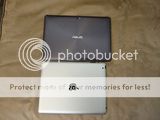
Rear Asus Logo (no there is no plastic window to allow better antena reception like apple does with the apple logo):

thickness view (yes the Prime is thinner than the iPad2):


So how is the usage experience?
Well thus far I've only had a little bit of time to play with it but what I've seen is impressive. First off I have not experienced any of the complaints people gave the prime. my wifi is full and strong, the device is superfast and it locked in to GPS with no problem. I suspect this had more to do with the 4.0 upgrade that remedies much of this. the screen is super responsive and almost as sooth and slick as in IOS. when compared to the phone version of Android 4.0, though the tablet version seems to lack some of the glow effects you see when running to the end of swipes (either that or they are deactivated by default and I have not figured out how to activate them). Getting used to the location of things was easy and pretty natural. One big difference between ICS and Honeycomb is that android seems to have gotten rid of it's preview window in tablets. This means that there is no longer a button to show you all your desktops at once and allow you to jump directly to any of them. Again, If the feature is still here, it is not on by default and I have not figured out how to enable it. This feature is absent in the phone version too BTW. the much bigger form factor take a little getting used to since the way in whch you organize icons in the phone doesn't really translate to the tablet, and the bigger screen real estate allows you to use widgets more extensively. I have not yet quite figured out how I plan t organize the desktops and which widgets I will ultimately use. Suffice it to say that I played with it a bit and everything is still in flux.
One thing that was surprised about is that the tablet is running the latest build of ICS (4.0.3), while the phone, which is a nexus device, is running 4.0.2. Not enough for me to tell a difference, but I though it was worth mentioning.
So what did Asus modify in Android? Well, not much. the biggest tings I can see are settings specific to power management which are geared toward the processor and the super IPS screen (basically presets that control screen brightness and allow you to deactivate processor cores to save power). on the UI itself Asus added a modified notification bar which adds more function toggles than the original and does so more cleanly. it also has a smaller clock but with slightly more information. The Asus notification bar also includes more detailed battery info as wel as screen brightness controls and a direct link to the settings menu. It is very well executed and I honestly thought it was the standard ICS menu until I found the feature allowing you to disable it. I compared it to the stock ICS menu and liked this one better so I reactivated it (it is very well done and looks like a native feature). Asus also added the functionality to take screen shots by long pressing the task switcher (very nice). I'm not sure if this is an Asus mod or a native feature, but I noticed that when you install an app that has not been optimized for ICS (meaning it has not been made to take advantage of the larger screen and on screen buttons), and extra command button pops up next to the three existing ones and gives you the option to stretch the app to work full screen or zoom in on the relevant content. This is a nice way of adjusting for apps that have not yet been optimized for running on 4.0. Asus also replaces the native ICS keyboard with their own, which is also very good. if you don't care for it, you can always disable it and use the native ICS keyboard (personally, I'm waiting for Swype for ICS to come out so I can put it on the phone and on the tablet).
Another odd thing I discovered is that on the phone, logging in to my gmail account automatically recognized all my apps and downloaded them all into the phone. with the prime this happened as well, but the prime didn't download everything, only some of the apps. I don't know if this happened because I didn't sync the device when prompted when I first turned it on (and instead did it manually after everything had upgraded) or whether this had something to do with apps optimized for ICS only. Whatever the case I got on my computer, found my apps and from my computer simply added the ones I wanted to the prime. once I did, the prime installed them automatically. I was surprised that very few apps Mainly old ones I hardly use, where found to not be compatible with the prime. That said, not everything was optimized for ICS yet. the only place this seemed to be an issue was in a couple of widgets I use in the phone version of ICS which simply don't scale well in the tablet version. interestingly, in both accounts I found that the tablet already has native functionality that does the same thing those widgets did so for now I'm good.
There are some nice features to ICS on the tablet. the biggest thing is that the browser is almost identical to chrome (though without all the chrome OS extensions - but those are part of android directly so no biggie). Another nice feature is that the task switcher finally allows for true multitasking, allowing you to jump directly from one active app to another, preview running apps and easily deactivate them by simply swiping them off the screen (yes there is no longer a need for a task killer).
So what crapware did Asus install? here I haven't really had a chance to explore much, but it seems to be a mix of functionality apps. they have added Polaris Office by default, so you have a full, on board office suite which I understand is very good. they have also added a file manager which allows you to explore the inner workings of the device and find files both in the memory and in the SD card. Another cool app is super Note, which is a very good note taking app. on the reading front, Kindle comes preloaded as is a native library app and an app locker feature (not sure what that does yet). the biggest push for preloaded app seems to be cloud storage, of which there seem to be 3 or 4 apps, all of them related to asus. In understand they are free and included with the device, but have not yet explored them. there are also at least 3 news readers similar to Pulse, all of which offer a free trial followed by subscription services after you are done (i deactivated all of them). That's about it.
anyhow, the following are some screenshots showing the device as it compares to ICS on a Galaxy Nexus.
Main Screen on the Galaxy nexus:

Main screen on the Prime (for now):
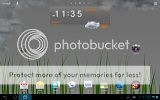
Secondary Screens on the Galaxy Nexus:
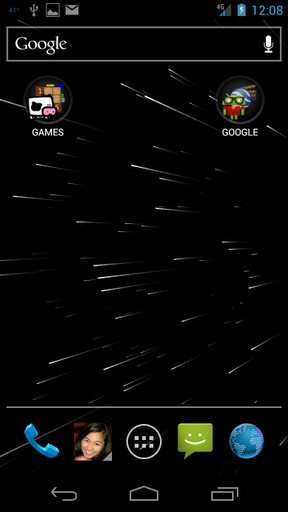
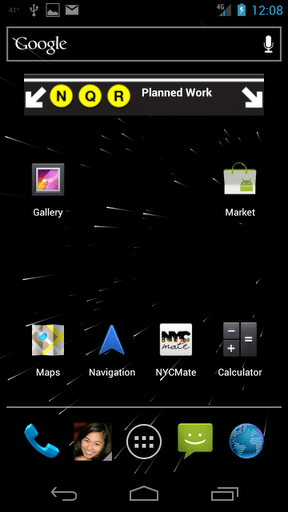
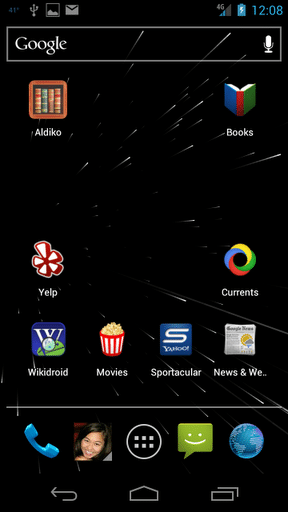
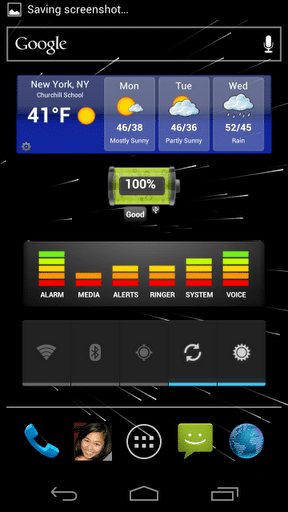
a Secondary screen on the Prime:
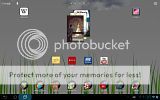
App & Widget drawer on the Nexus:
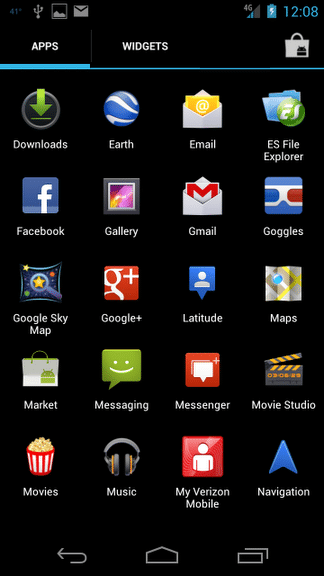
App & widget drawer on the prime:
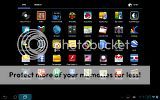

Overall, the prime is a pretty awesome device ad I expect to become much more familiar with it over the next few weeks. the biggest downsides of it I've noticed is that the screen is a fingerprint magnet (something the screen on the nexus is not - I think it is coated with something). Also I can easily see the prime needing some kind of case to store it in since just like an Ipad, not doing so will make it prone to scratches and accidents. Unlike the iPad, there are very few options in terms of cases for the prime or even protective screen for the screen. thankfully, the prime's keyboard dock can do double duty as a protective case and charging station, so I have a strong suspicion that I will be ordering one of those in the coming weeks.
Feel free to ask any questions and I'll do my best to answer them.
When google released Android 3.0 Honeycomb, I was super excited. Finally Android had something to allow me to go in the direction I wanted. As soon as Android 3.0 tablets started hitting the market I made my way to Best buy to test drive them. While the UI was nice and definitely it's own thing (not aping Apple), I found it unnecessarily complex and not nearly as polished as it needed to be. Sure it had Android's typical flexibility and power, but it was definitely rough around the edges. Add to that, the hardware was still expensive and not nearly as well executed as the iPad. I almost threw in the towel and bought a second iPad, when I heard google say that android 3.0 was only a hold over, was incomplete, and would be merging the phone and tablets versions of android into a single product, Android 4.0. I decided to wait.
In October, Google announced that they would be releasing the first Android 4.0 device, the Samsung Galaxy Nexus. Since my renewal was coming up, I went ahead and ordered one and waited until the second week of December before it finally became available. Wow, what a phone. The hardware was slick, super high quality, original design, but most importantly, Android 4.0 was freaking Awesome. This was the first time I had seen an Android UI that needed no skinning (though I would have loved to have seen some tiny mods). If this is what the tablet version was supposed to be like, I was glad I waited. Then Asus released the Transformer Prime, promising Android 4.0, virtually stock, with high hardware specs and a high quality build. This is exactly what I'd been waiting for, so as soon as able, I had the wife order me a "christmas present": a 64GB Transformer prime in Amethyst Grey (the black model). Of course Asus over-promised and delayed and I ended up waiting about a month before the Prime was finally delivered. Fedex buggered the delivery and finally got the device to me yesterday.
So what about the Prime?
What I got was a small box about the size of a phone book (remember those?). Open the box and there is the prime staring right at you, wrapped in clear plastic, which is market with little indicators pointing to the different ports, cameras and buttons. Remove the prime from the box and below is a staggered recessed container, holding the instruction manual, warranty card, a thank you note from Asus a microfiber cloth (to wipe the screen clean of greasy fingers), a charging brick and a usb connector with a 30 pin socket on one end (very similar to the iPad's but smaller).
I turned on the device just to make sure all was in order. It was. I noticed it was only charged to about 20%, so figuring that I wouldn't be able to use it at the office since it needed to be configured (and that required an internet connection - which this device can't access at the office), I plugged it in and let it charge for the rest of the day. I figured I could get to business as soon as I got home. One thing I noticed before turning it off was that it came running Android 3.2 (the latest build of Honeycomb), and that it was fast and smooth.
Once home I took care of the family duties, started up the Prime connected it to my home network and associated it to my Google account. The prime immediately began syncing with google and downloading my stuff. As soon as it was done, It began to download a firmware update for the OS, replacing Android 3.2 with Android 4.0.3. It then downloaded another firmware update for the camera. between the updates the installations and the downloading of all my google stuff, I think it took about half an hour. once done I was ready to go.
Right away I noticed thatAndroid 4.0 on a tablet is almost identical to that on a phone, but with slight differences. for example, on the phone version, controls and notifications are handled on the top and bottom of the screen, where one thumb can easily reach them. on the tablet all these features are moved to the corners of the device, where they are easily reached by thumbs on either side. some things are moved around. for example, the app drawer which is at the bottom on the phone version, is on the top right hand corner on the tablet version. The notification bar which is on the top and drops down on the phone version, is on the bottom right and pops up on the tablet version. the google search bar is persistent like on the phone, but on the tablet it is much smaller and on the to lefthand corner. The on screen buttons for back, home and the task switcher are in the same place for both, arranged in the same order, and work exactly as advertised. the only difference is that on the phone to take a screen shot, you have to hold the power button and volume down buttons together, while on the tablet you have to long press the task switcher. Other than that the tablet variant lacks a persistent dock, which the phone variant uses to take advantage of phone functions. That's it, that's the end of the differences in Android 4.0 between phones and tablets. That said, Asus, does add some bundled software (not all crapware), and does have some very minor, but useful UI mods, which it allows you to deactivate if you prefer the stock Android experience. Android 4.0 also has a neat feature, which allows you to deactivate any bundled software that can't be uninstalled without rooting the device (the software remains installed, but it no longer operates and no longer shows up in your app drawer.
Ports and buttons. below are some pictures showing the ports and buttons on the prime:
30 pin connector:

mic/headphone combo port:

rear camera, sensor and led flash:

Micro SD card Slot:

Volume rocker and HDMI port:

Power button:

Front Facing Camera:

So how does it compare to the iPad?
the Prime compares very favorably to the iPad2. The design is similar without being identical. Like the iPad, it is a unibody metal case design with rounded corners and a screen surrounded by a black bezel. Unlike the ipad, the prime has a 16:9 aspect ratio (the ipad has a 4:3), which means that you get to vie wide screen video and games in full screen, as opposed to with top and bottom black bars. This also means that the prime is longer, which might make you favor one orientation over another more so than on an ipad (the designer obviously favored the landscape view). The prime also has expandable memory (via Sd micro SD card on board and via USB, regular SD card and built in memory if you add the keyboard dock) and HDMMI out. It also has not physical buttons (read no big physical home button), relying instead on capacitive software based icon buttons, that appear, disappear and move depending on what you are doing. The Prime also has a full gig of ram, and is the first use of a quad core tegra 3 processor. This last bit is a big deal as throwing this level of power at android has really gone a long way toward making it is almost as smooth and responsive as a IOS. The following are some pictures comparing the Prime to an iPad 2:
Top view (notice the dimensions):

Rear View (both have solid metal backs):

Rear Asus Logo (no there is no plastic window to allow better antena reception like apple does with the apple logo):

thickness view (yes the Prime is thinner than the iPad2):


So how is the usage experience?
Well thus far I've only had a little bit of time to play with it but what I've seen is impressive. First off I have not experienced any of the complaints people gave the prime. my wifi is full and strong, the device is superfast and it locked in to GPS with no problem. I suspect this had more to do with the 4.0 upgrade that remedies much of this. the screen is super responsive and almost as sooth and slick as in IOS. when compared to the phone version of Android 4.0, though the tablet version seems to lack some of the glow effects you see when running to the end of swipes (either that or they are deactivated by default and I have not figured out how to activate them). Getting used to the location of things was easy and pretty natural. One big difference between ICS and Honeycomb is that android seems to have gotten rid of it's preview window in tablets. This means that there is no longer a button to show you all your desktops at once and allow you to jump directly to any of them. Again, If the feature is still here, it is not on by default and I have not figured out how to enable it. This feature is absent in the phone version too BTW. the much bigger form factor take a little getting used to since the way in whch you organize icons in the phone doesn't really translate to the tablet, and the bigger screen real estate allows you to use widgets more extensively. I have not yet quite figured out how I plan t organize the desktops and which widgets I will ultimately use. Suffice it to say that I played with it a bit and everything is still in flux.
One thing that was surprised about is that the tablet is running the latest build of ICS (4.0.3), while the phone, which is a nexus device, is running 4.0.2. Not enough for me to tell a difference, but I though it was worth mentioning.
So what did Asus modify in Android? Well, not much. the biggest tings I can see are settings specific to power management which are geared toward the processor and the super IPS screen (basically presets that control screen brightness and allow you to deactivate processor cores to save power). on the UI itself Asus added a modified notification bar which adds more function toggles than the original and does so more cleanly. it also has a smaller clock but with slightly more information. The Asus notification bar also includes more detailed battery info as wel as screen brightness controls and a direct link to the settings menu. It is very well executed and I honestly thought it was the standard ICS menu until I found the feature allowing you to disable it. I compared it to the stock ICS menu and liked this one better so I reactivated it (it is very well done and looks like a native feature). Asus also added the functionality to take screen shots by long pressing the task switcher (very nice). I'm not sure if this is an Asus mod or a native feature, but I noticed that when you install an app that has not been optimized for ICS (meaning it has not been made to take advantage of the larger screen and on screen buttons), and extra command button pops up next to the three existing ones and gives you the option to stretch the app to work full screen or zoom in on the relevant content. This is a nice way of adjusting for apps that have not yet been optimized for running on 4.0. Asus also replaces the native ICS keyboard with their own, which is also very good. if you don't care for it, you can always disable it and use the native ICS keyboard (personally, I'm waiting for Swype for ICS to come out so I can put it on the phone and on the tablet).
Another odd thing I discovered is that on the phone, logging in to my gmail account automatically recognized all my apps and downloaded them all into the phone. with the prime this happened as well, but the prime didn't download everything, only some of the apps. I don't know if this happened because I didn't sync the device when prompted when I first turned it on (and instead did it manually after everything had upgraded) or whether this had something to do with apps optimized for ICS only. Whatever the case I got on my computer, found my apps and from my computer simply added the ones I wanted to the prime. once I did, the prime installed them automatically. I was surprised that very few apps Mainly old ones I hardly use, where found to not be compatible with the prime. That said, not everything was optimized for ICS yet. the only place this seemed to be an issue was in a couple of widgets I use in the phone version of ICS which simply don't scale well in the tablet version. interestingly, in both accounts I found that the tablet already has native functionality that does the same thing those widgets did so for now I'm good.
There are some nice features to ICS on the tablet. the biggest thing is that the browser is almost identical to chrome (though without all the chrome OS extensions - but those are part of android directly so no biggie). Another nice feature is that the task switcher finally allows for true multitasking, allowing you to jump directly from one active app to another, preview running apps and easily deactivate them by simply swiping them off the screen (yes there is no longer a need for a task killer).
So what crapware did Asus install? here I haven't really had a chance to explore much, but it seems to be a mix of functionality apps. they have added Polaris Office by default, so you have a full, on board office suite which I understand is very good. they have also added a file manager which allows you to explore the inner workings of the device and find files both in the memory and in the SD card. Another cool app is super Note, which is a very good note taking app. on the reading front, Kindle comes preloaded as is a native library app and an app locker feature (not sure what that does yet). the biggest push for preloaded app seems to be cloud storage, of which there seem to be 3 or 4 apps, all of them related to asus. In understand they are free and included with the device, but have not yet explored them. there are also at least 3 news readers similar to Pulse, all of which offer a free trial followed by subscription services after you are done (i deactivated all of them). That's about it.
anyhow, the following are some screenshots showing the device as it compares to ICS on a Galaxy Nexus.
Main Screen on the Galaxy nexus:

Main screen on the Prime (for now):

Secondary Screens on the Galaxy Nexus:




a Secondary screen on the Prime:

App & Widget drawer on the Nexus:

App & widget drawer on the prime:


Overall, the prime is a pretty awesome device ad I expect to become much more familiar with it over the next few weeks. the biggest downsides of it I've noticed is that the screen is a fingerprint magnet (something the screen on the nexus is not - I think it is coated with something). Also I can easily see the prime needing some kind of case to store it in since just like an Ipad, not doing so will make it prone to scratches and accidents. Unlike the iPad, there are very few options in terms of cases for the prime or even protective screen for the screen. thankfully, the prime's keyboard dock can do double duty as a protective case and charging station, so I have a strong suspicion that I will be ordering one of those in the coming weeks.
Feel free to ask any questions and I'll do my best to answer them.
Last edited:
